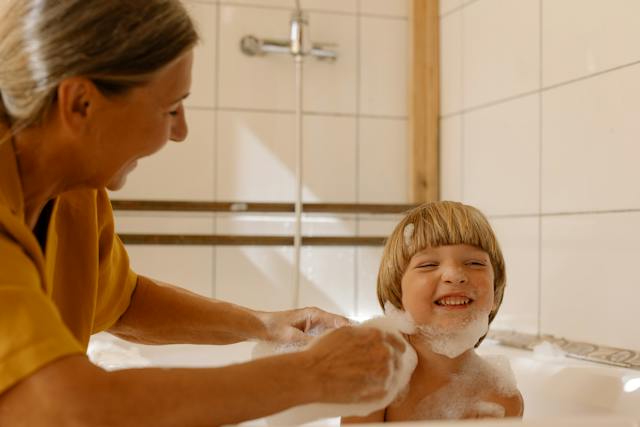Giving a baby a bath can be a fun and bonding experience for both the parent and the child.
However, for new parents, it can also be a little intimidating. Bath time is important for keeping your baby clean and healthy, but it’s essential to do it in a safe and comfortable way.
In this article, we will guide you through the process of giving your baby a bath, step by step.
Before we begin, it’s important to note that there are different methods for bathing a baby depending on their age, size, and developmental stage.
In general, it is recommended that newborns and young infants be bathed in a sink or a small infant tub, while older babies can transition to a regular bathtub.
We’ll provide instructions for both scenarios.
Step 1: Gather Your Supplies
Before you begin, make sure you have all the supplies you need within reach. This includes:
A clean, soft towel
Mild baby soap or cleanser
A clean diaper
Clean clothes for your baby
A small plastic cup or a soft washcloth
Step 2: Prepare the Bathing Area
If you’re using a sink or infant tub, fill it with warm (not hot) water, about 2-3 inches deep.
Use your elbow or a bath thermometer to test the water temperature to ensure it’s not too hot.
Make sure the area is clean and free of any hazards, such as sharp objects or slippery surfaces.
Step 3: Undress Your Baby
Undress your baby, leaving only their diaper on for now.
If you’re bathing your baby in a sink, place a towel or a non-skid mat at the bottom to prevent slipping.
Step 4: Begin Bathing
If your baby is a newborn or young infant, hold their head and neck with one hand while using the other hand to gently wash their body with a soft washcloth or sponge.
Start with the face, then move down to the neck, chest, belly, arms, and legs. Be sure to clean in all the folds and creases, but avoid getting soap in their eyes or mouth.
If your baby is older and can sit up, you can place them in the infant tub or regular bathtub.
Again, start by washing their face and work your way down.
Use a small plastic cup to pour water over their body, or use a gentle showerhead attachment if available.
Step 5: Rinse and Dry
Once you’ve finished washing your baby, rinse them thoroughly with clean water, making sure to remove all the soap.
Lift your baby out of the tub or sink and wrap them in a clean, dry towel, patting them dry gently.
Step 6: Diaper and Dress Your Baby
Remove your baby’s wet diaper and clean them thoroughly.
Then, dress them in clean, dry clothes.
If it’s cold, you may want to swaddle them in a warm blanket until they’re completely dry.
In conclusion, giving a baby a bath can be a fun and enjoyable experience for both the parent and the child.
It’s important to remember to always ensure that the bathing area is safe, the water temperature is comfortable, and that you have all the necessary supplies.
By following these steps, you’ll be able to give your baby a safe and comfortable bath.
![]()





